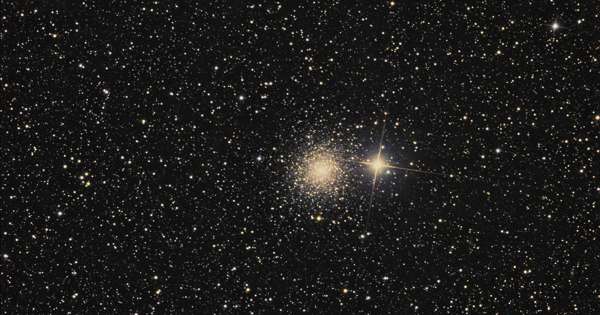V838 Monocerotis is a red giant star in the constellation Monoceros. It is well-known for experiencing rapid growth in size in the year 2002. It is a spectroscopic binary star system in the constellation Monoceros about 19,000 light-years (6 kpc) from the Sun. It is also known as Nova Monocerotis 2002. When this happened, the star grew to be 1,570 times the size of the Sun. However, it shrank in size, becoming only 380 times larger than the Sun. It has a brightness 20,000 times that of the Sun.
The previously unremarked star was observed experiencing a major outburst in early 2002 and was possibly one of the largest known stars for a short period following the outburst. It was initially thought to be a typical nova eruption, but it was later discovered to be the first of a new class of eruptive variables known as luminous red novae. The cause of the outburst is unknown, but several hypotheses have been advanced, including an eruption caused by stellar death processes and a merger of a binary star or planets.
V838 Monocerotis temporarily increased in brightness to become 600,000 times brighter than the Sun in early 2002. It had erupted several years before, unnoticed, but it could have been caused by two stars merging within a three-star system. Over the course of several years, researchers made repeated observations that allowed them to track the light as it moved away from the star and through layers of surrounding dust. Light emitted earlier, when the star was hotter, is still bluer.
For unknown reasons, the outer surface of star V838 Mon suddenly expanded, causing it to become the brightest star in the entire Milky Way Galaxy in January 2002. Then, just as quickly, it faded away. This type of stellar flash had never been seen before; supernovas and novas expel matter into space. Although the V838 Mon flash appears to expel material into space, what is seen in the Hubble Space Telescope image above is actually an outwardly moving light echo of the bright flash.

The explosion took place on one of two B3 main sequence stars in a close binary orbit. The erupting star evolved into a very cool supergiant and briefly engulfed its companion. By 2009, the supergiant’s temperature had risen (since 2005) to 3,270 K, and its luminosity was 15,000 times that of the Sun (L☉), but its radius had shrunk to 380 times that of the Sun (R☉), despite the fact that the ejecta continued to expand.
The star brightened to about a million times the solar luminosity and an absolute magnitude of 9.8, making V838 Monocerotis one of the most luminous stars in the Milky Way galaxy at the time of maximum V838 Monocerotis. The brightening was caused by the rapid expansion of the star’s outer layers. The Palomar Testbed Interferometer was used to observe the star, which revealed a radius of 1,570 ±400 R☉ (comparable to Jupiter’s orbital radius), confirming earlier indirect calculations.
The measured angular diameter (1.83 mas) in late 2004 corresponded to a radius of 1,200±150 R☉ at the currently accepted distance of 6,100 pc, but by 2014 it had shrunk to 750±200 R☉, similar to Betelgeuse. The expansion took only a few months, indicating that its speed was unusual. The laws of thermodynamics require expanding gases to cool. As a result, the star turned extremely cool and deep red. In fact, some astronomers believe the star’s spectrum is similar to that of L-type brown dwarfs. If this is the case, V838 Monocerotis would be the first L-type supergiant discovered.
The star, it turns out, is embedded in a trillion-mile-wide cloud of dust. According to astronomers, V 838 was most likely formed by these dust wreaths four million years ago. The pulses of light traveling outward from the explosion would normally be invisible, but they have illuminated shells of dust previously kicked off the star. The Hubble Space Telescope has captured images of these so-called light echoes, and viewing them in sequence reminds me of the explosion of Darth Vader’s Death Star — except that nothing is moving except the outward-rushing light wave; the dust is still standing still.
















